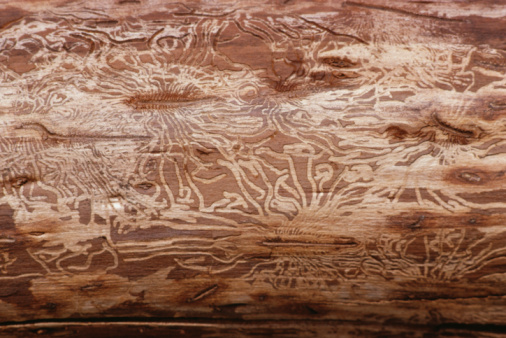Recent Posts
How to Tell If Your Wood Is Insect-Damaged
Posted by on

Solid wood furniture is more than a design choice—it is an investment in craftsmanship, longevity, and natural beauty. However, as enduring as hardwood may be, it is not impervious to the subtle, yet destructive forces of nature—specifically, wood-boring insects.
Whether you own an antique reproduction or an original Victorian chair, safeguarding your furniture begins with knowledge. Understanding how to identify the signs of insect activity is essential in preserving the structural integrity and aesthetic value of your solid wood pieces. Below, we outline the primary indicators of insect damage in wood furniture and what steps to take if you suspect an infestation.
Understanding Wood-Boring Insects
Several types of insects are known to invade and feed on wood, both in nature and within the home. The most common culprits include:
- Termites – Subterranean termites are notorious for their ability to consume wood from the inside out. They often go unnoticed until significant damage has occurred.
- Powderpost Beetles – These small beetles lay eggs in the pores of hardwoods; when the larvae hatch, they feed on the wood before emerging as adults through small exit holes.
- Carpenter Ants – Unlike termites, carpenter ants do not consume wood but rather excavate it to create nests. Their tunneling weakens the structure of wooden furniture.
Although their methods differ, the result is similar: weakened, hollowed, or aesthetically compromised furniture.
Key Signs of Insect Damage in Wood Furniture
Identifying insect damage early can mean the difference between a simple treatment and costly restoration. Wood-boring pests often leave subtle, telltale signs that may go unnoticed until significant harm is done. Here, we outline the most common indicators that your solid wood furniture may be under attack—so you can act quickly to preserve its beauty and integrity.
- Exit Holes and Tunnels
Perhaps the most apparent sign of infestation is the presence of small, round holes—known as exit holes—on the surface of the wood. These are typically 1/16 to 1/8 inch in diameter and may be found on the underside or hidden sections of the furniture. Their appearance signals that adult insects have burrowed their way out after feeding on the internal wood fibers.
Beneath the surface, unseen tunnels may exist—some forming an intricate network that can critically undermine the strength of the piece. - Frass (Fine Sawdust)
Insect activity often leaves behind frass, a fine, powdery sawdust composed of wood particles and insect excrement. This byproduct typically gathers beneath furniture or within drawers and joints. The presence of frass is an unmistakable indication that insects are actively feeding and tunneling inside the wood. - Soft or Hollow-Sounding Wood
Wood that appears solid but sounds hollow when tapped may have been compromised by internal tunneling. In more severe cases, gentle pressure may cause sections to crumble or collapse—a serious sign that the integrity of the piece is in jeopardy. - Blisters or Bubbles in the Finish
While not as common, bubbling or blistering beneath the wood’s finish can suggest moisture build-up due to insect activity or the beginning stages of decay. If left untreated, this can attract more pests. - Live Insects or Wings
You may occasionally see live insects, discarded wings (a hallmark of termites), or the beetles themselves emerging from exit holes. In such instances, an active infestation is likely underway, and immediate intervention is necessary.
What to Do if You Suspect Insect Damage
Early detection is vital. If you observe any of the above indicators:
- Isolate the Piece: Move the affected furniture away from other wood items to prevent further spread.
- Consult a Professional: A licensed pest control specialist can confirm the presence and type of infestation and recommend the appropriate treatment, which may include fumigation, heat treatment, or chemical solutions.
- Preserve and Restore: Depending on the severity of the damage, restoration by a professional furniture conservator may be possible. Our pieces, crafted with time-honored techniques, can often be repaired to maintain their original elegance and function.
Prevention: A Proactive Approach
To avoid insect damage in the future, consider the following preventive steps:
- Keep indoor humidity levels low, as excess moisture attracts pests.
- Regularly inspect furniture, especially antique or heirloom pieces.
- Avoid placing furniture directly against walls where hidden infestations may exist.
- Store wooden items in dry, well-ventilated areas.
- Use protective finishes that deter insect intrusion while enhancing the natural beauty of the wood.
Preserve the Beauty, Protect the Legacy
We take immense pride in the artistry and integrity of our solid wood furniture. Maintaining the condition of these treasures ensures they will be admired for generations to come. Vigilance is key—know the signs, act swiftly, and your fine furniture will remain a lasting testament to quality and craftsmanship.
Don’t forget to check out the rest of our blog posts. For example, our piece on types of wood used for antique furniture is very helpful in determining whether you have a true antique or a reproduction.









